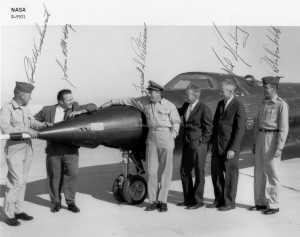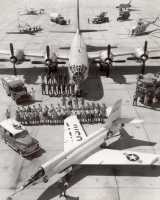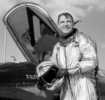X-15 Research Pilots...
All X-15 research pilots were engineers
as well as pilots. Some left a record of engineering achievement that
is little known but that may in fact have been at least as important as
their flight experience. Scott Crossfield is foremost on this list for
his work with North American Aviation in development of the X-15. Milt
Thompson took on research engineering tasks and projects throughout his
service at NASA Dryden, not only on the X-15 but also on lifting bodies
and other projects. He left a collection of engineering notes which
remains as the Thompson Collection in the NASA Dryden History Office.
Neil Armstrong, then as now, was a research engineer first and a
research pilot second. His contributions in both areas continued when
he moved in 1962 from the X-15 program to Gemini, then to Apollo.
Engineering and science were integral parts of the X-15's flight research program, it required tall of its pilots to have special skills in this area. For that reason they are referred to here as research pilots rather than as test pilots.
Engineering and science were integral parts of the X-15's flight research program, it required tall of its pilots to have special skills in this area. For that reason they are referred to here as research pilots rather than as test pilots.













